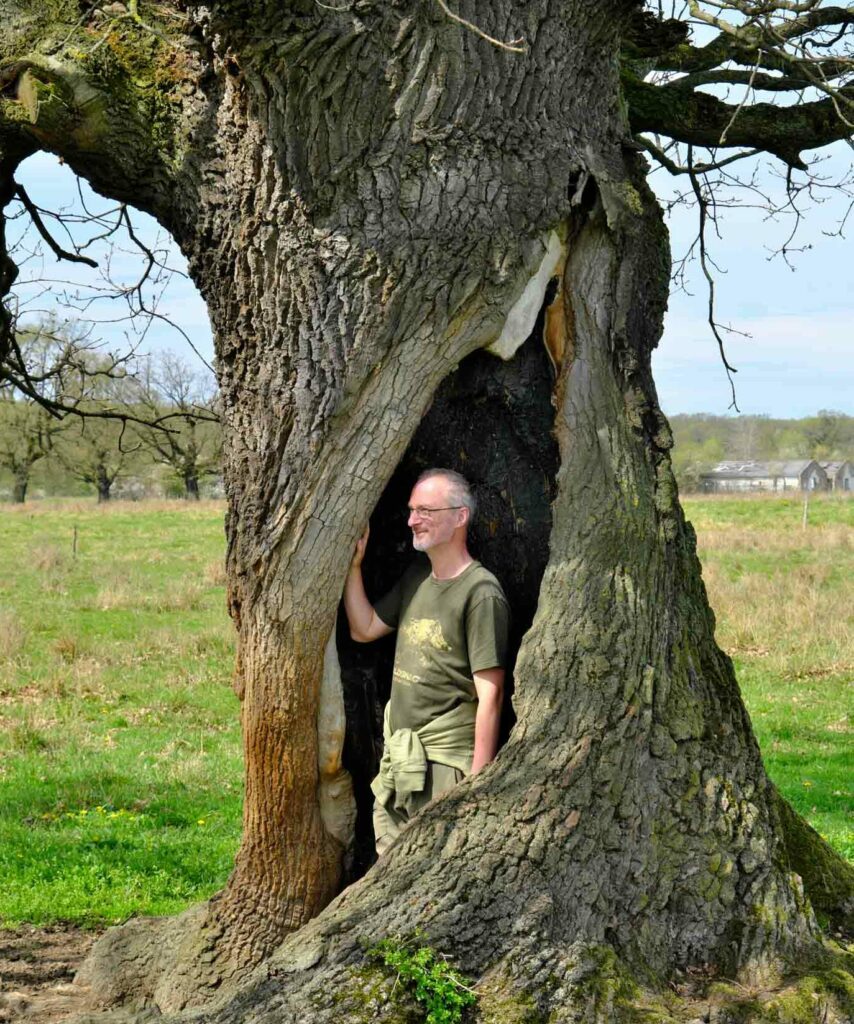Recently, university lecturer and ecology researcher Tibor Hartel from the Babes-Bolyai University (UBB – Faculty of Environmental Science and Engineering) spoke on TVR Cluj’s SUMMA show, produced by Ms. Enikő Pákai, about his professional career, the social and cultural importance of pastures with trees, but also about our project “Wood-pastures of Transylvania”.
The discussion, which was held in Hungarian with Romanian subtitles, can be listened to and viewed on the following link: https://www.youtube.com/watch?v=jges2ilorNc
Below we reproduce only those elements of this conversation that relate to the wood-pastures of Transylvania.
“…Planting trees is an activity that enjoys great popularity. No one questions the activities of planting trees, creating tree plantations or plantation forests. I differentiated between the creation of tree plantations and the forest because they are not one and the same thing, only in the collective consciousness the two notions (plantation and forest) confused. If we want to create a plantation with trees, then we go to plant trees. But ecology specialists have pointed out that we have to be a little careful with the planting of trees because we could destroy the ancient meadows through these activities. In Transylvania (Romania) and in Hungary there are meadows where for tens or hundreds of thousands of years there were no compact forests (as we interpret the forest today, note to the reader). This means that these ancient grasslands and soils are very special. It is not allowed to destroy them through afforestation…” reports Tibor Hartel.
“It’s not by chance that you just gave the example of wood-pastures because these are precisely the theme of the research you have been dealing with in recent years.”
“Yes, that´s right.”
“You also drew some conclusions. Would you list a few for us so we know why tree-strewn pastures are important to us?”
“Fortunately, I was part of the small team of researchers that gave impetus, or inspired the research of wood-pastures in Europe. Wood-pastures are very important from several points of view. Based on our research, but also on the evidence, they exist all over the world including in Europe, in South America, and from an ecological point of view they contribute to the increase of biodiversity. Now I’m talking about landscape used for production purposes (and not protected areas, note to the reader).
Research shows that the diversity of trees and birds, the diversity of invertebrates and plants of such a landscape is much greater than that of plantation forests. Wood-pastures appear to be resilient ecosystems. What does this resilience consist of? In the fact that the diversity of species translates into the diversity of ecological functions. In the pastures of this type in Transylvania, we found that the number of native oak species on the meadows can be greater than that of the oak species in the forests. There are wood-pastures with 4-5 species of oak.”
“And there are many such pastures in Transylvania.”
“That’s true. In terms of wood-pastures, Transylvania is a leading place in Europe. This is our biocultural treasure and heritage.”
“There is a project that you participate in and that you run together with your colleagues from Germany.”
“Yes. The essence of this project is the following: after we understand the wood-pasture ecosystem, we try to understand the stewards of these pastures, and we try to involve them in the sustainable use of wood-pastures. From this point of view, I have met many farmers who are receptive to the collaborative maintenance of these systems. We hope to be able to collect existing innovations around wood-pastures and publish them in one volume. We would also like to publish a guide that farmers can use, and in which we want to highlight the contexts…we would like to publish this guide in more languages.”

